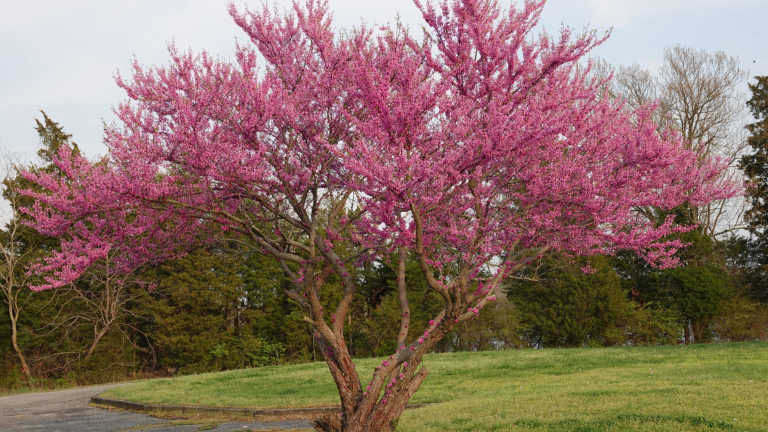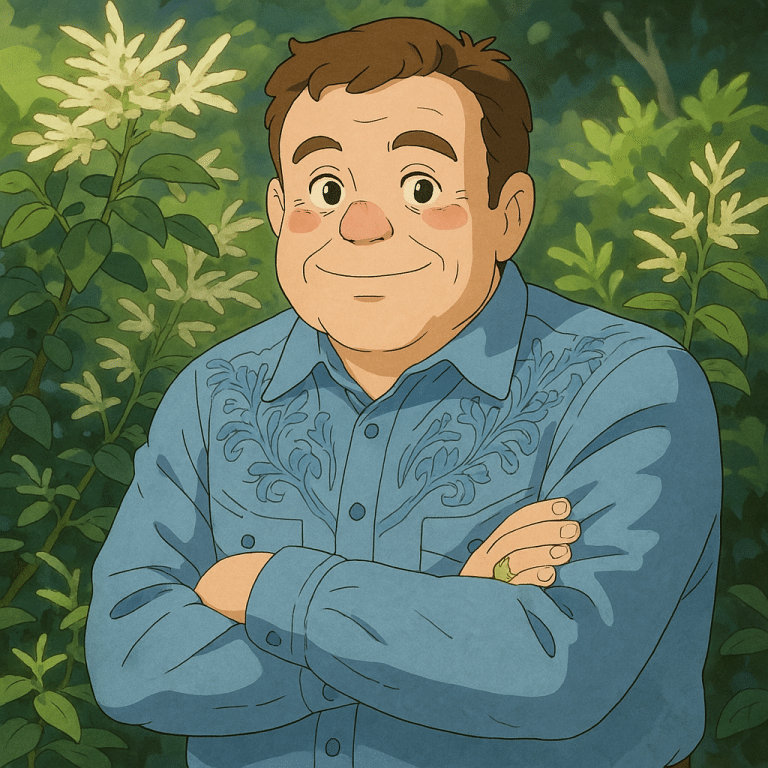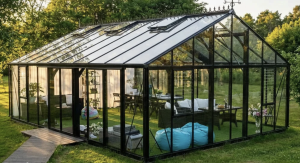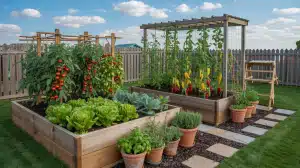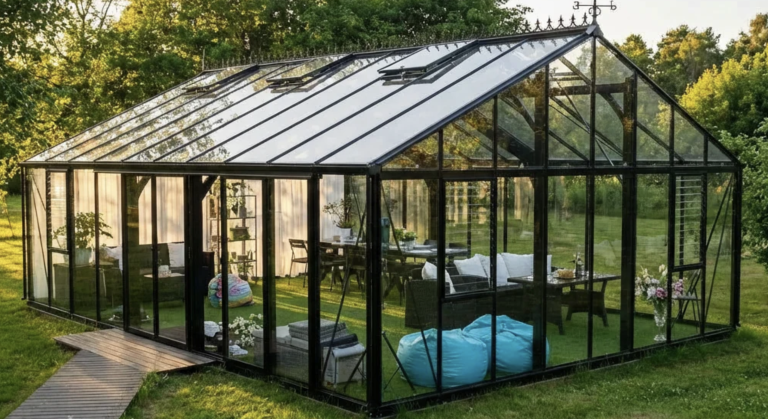I’ve always been drawn to trees with personality, and redbuds quickly became a favorite. Their heart-shaped leaves and spring blooms make them stand out.
When someone recently asked, “Are redbud tree roots invasive?” it made me pause and look more closely. I decided to learn more and see for myself how these roots behave.
In this post, I’ll share everything I found out, from how redbud roots grow to what gardeners should know before planting.
I’ll also touch on the benefits they bring, a few possible concerns, and the best ways to plant them to avoid trouble. If you’re thinking about adding a redbud to your yard, this guide should help you feel confident.
What Is a Redbud Tree?
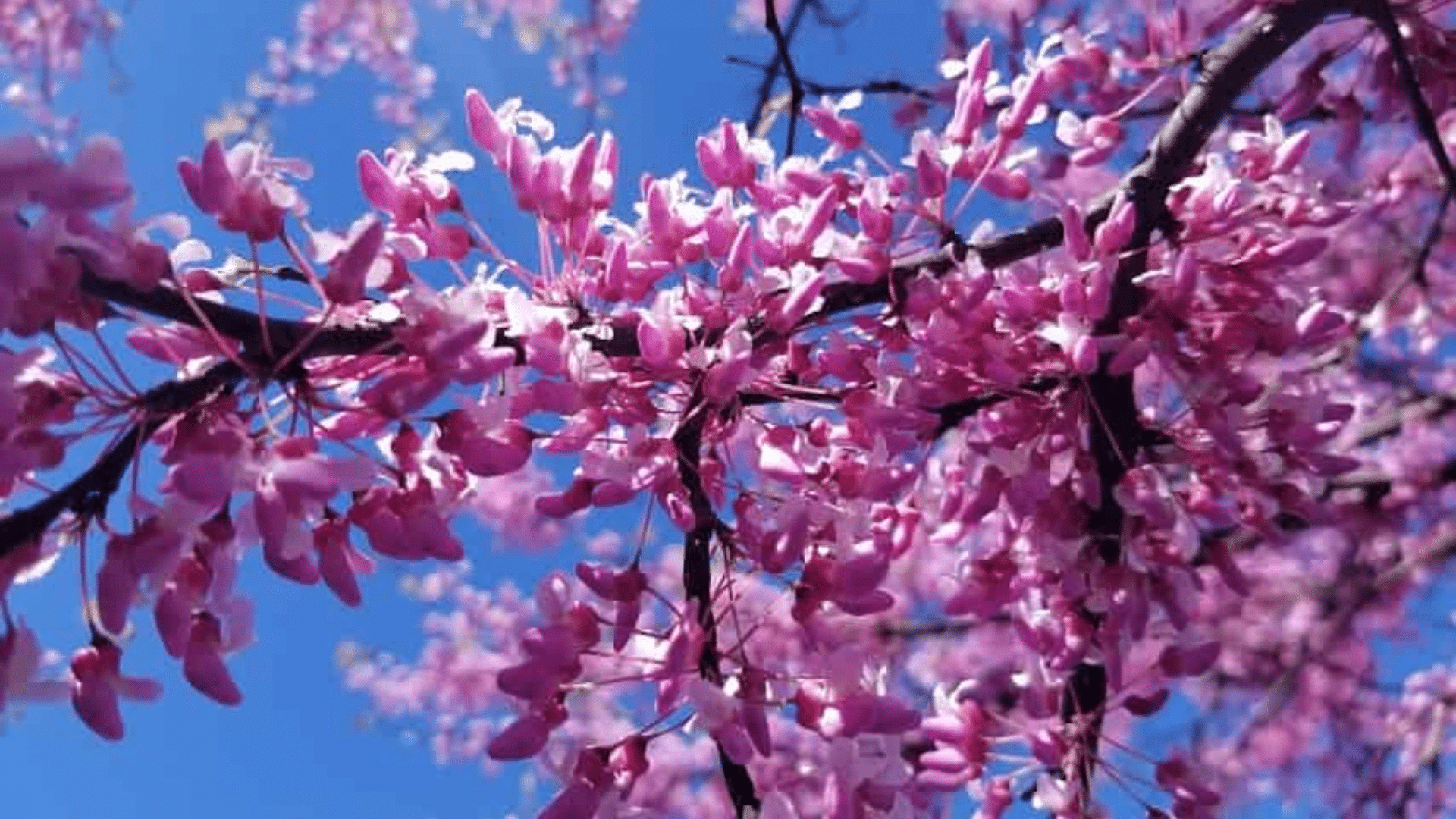
Redbud trees, known by their botanical name Cercis canadensis, are small deciduous trees that bring color and charm to many North American yards.
Native to the eastern United States, they typically grow 20 to 30 feet tall and just as wide.
In early spring, redbuds bloom with bright pink to purple flowers that cover the bare branches, creating a striking show before the leaves appear. Their heart-shaped leaves turn green in summer and may shift to yellow in fall.
These trees are a favorite among pollinators, attracting bees, butterflies, and birds, and they make a beautiful centerpiece or accent in most garden settings.
Redbuds adapt well to different soil types and do well in both full sun and partial shade. Because of their size and beauty, they’re a popular choice for small yards, front gardens, and native landscapes.
Key Characteristics of Redbud Trees
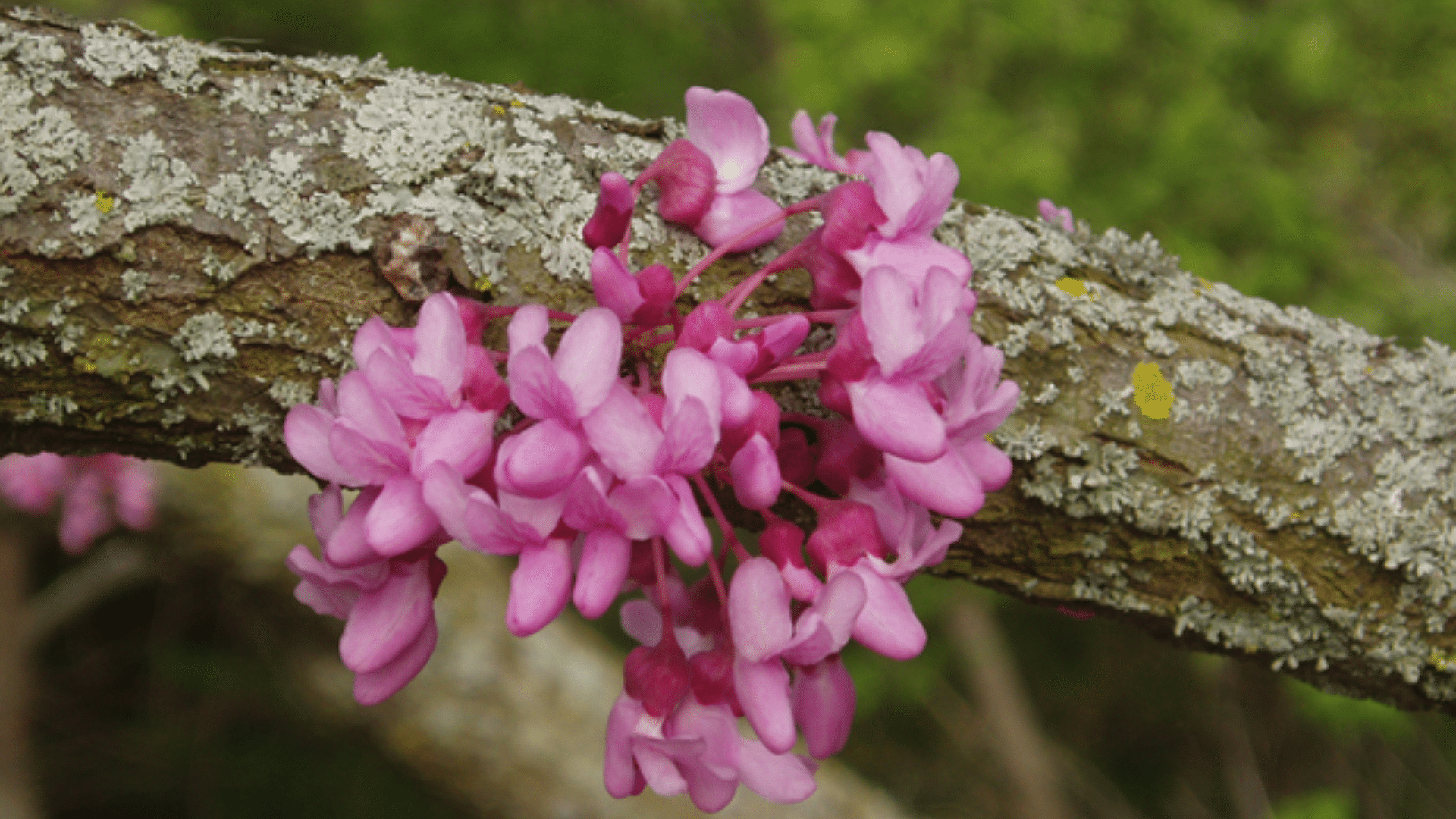
Redbud trees offer beauty, resilience, and ecological value, making them a great choice for small yards and native landscapes alike.
1. Size
Redbuds are considered small ornamental trees, growing about 20 to 30 feet tall and wide. Their compact size makes them perfect for smaller yards or gardens where space is limited but visual impact is still important.
They provide shade without overpowering surrounding structures or plants, and their rounded shape adds softness to any outdoor design.
2. Leaves
The leaves of a redbud tree are one of its standout features. They start out reddish-purple in spring, turn rich green in summer, and fade to golden yellow in fall.
Shaped like hearts, these leaves bring softness and charm to the landscape. Their seasonal color changes provide visual interest from early spring to the end of fall.
3. Flowers
Redbud trees burst into bloom in early spring with clusters of small, vibrant pink or purple flowers. These blossoms appear directly on the branches before the leaves come in, giving the tree a striking appearance.
The blooms last for several weeks and attract pollinators like bees and butterflies, making redbuds both beautiful and beneficial to garden health.
4. Growth Habit
Redbuds grow in a graceful, vase-like shape with a rounded canopy and spreading branches. This natural structure gives the tree an elegant appearance, making it ideal as a focal point in a landscape.
Its branch pattern also allows for easy pruning and maintenance. The balanced form contributes to its popularity in both formal and casual garden designs.
5. Root System
Redbud trees develop shallow, lateral root systems that spread widely near the soil’s surface. Most roots stay within the top 3–4 feet of soil and expand outward up to 25 feet in mature trees.
While not invasive, their wide reach means it’s best to plant them a safe distance from sidewalks, driveways, or buildings to avoid root interference.
6. Lifespan
Most redbuds live between 20 to 30 years, though some may decline sooner if exposed to poor soil, pests, or disease.
Proper care, such as planting in the right location, providing good drainage, and pruning dead limbs, can extend their lifespan.
Their shorter life expectancy is balanced by fast growth and quick establishment, making them a rewarding tree choice.
7. Wildlife Value
Redbuds support local ecosystems by attracting bees, butterflies, and hummingbirds with their early spring flowers. In fall, their seed pods offer food for birds and small animals.
As native trees, they also provide shelter and nesting support. Their high wildlife value makes them a great addition to any garden focused on supporting pollinators and biodiversity.
8. Adaptability
Redbud trees are highly adaptable to different soil conditions, including clay, loam, and even slightly sandy soil. They tolerate full sun but also do well in partial shade, making them easy to place in most gardens.
Their ability to handle drought and urban conditions makes them a reliable option for both city and suburban landscapes.
9. Seasonal Interest
Redbuds provide four-season beauty, starting with bright blooms in spring, lush green leaves in summer, and golden foliage in fall. Even in winter, their branching pattern adds visual interest, especially when dusted with snow.
This consistent seasonal appeal makes redbuds a favorite for adding year-round color and structure to home gardens and outdoor spaces.
Understanding Invasive Roots
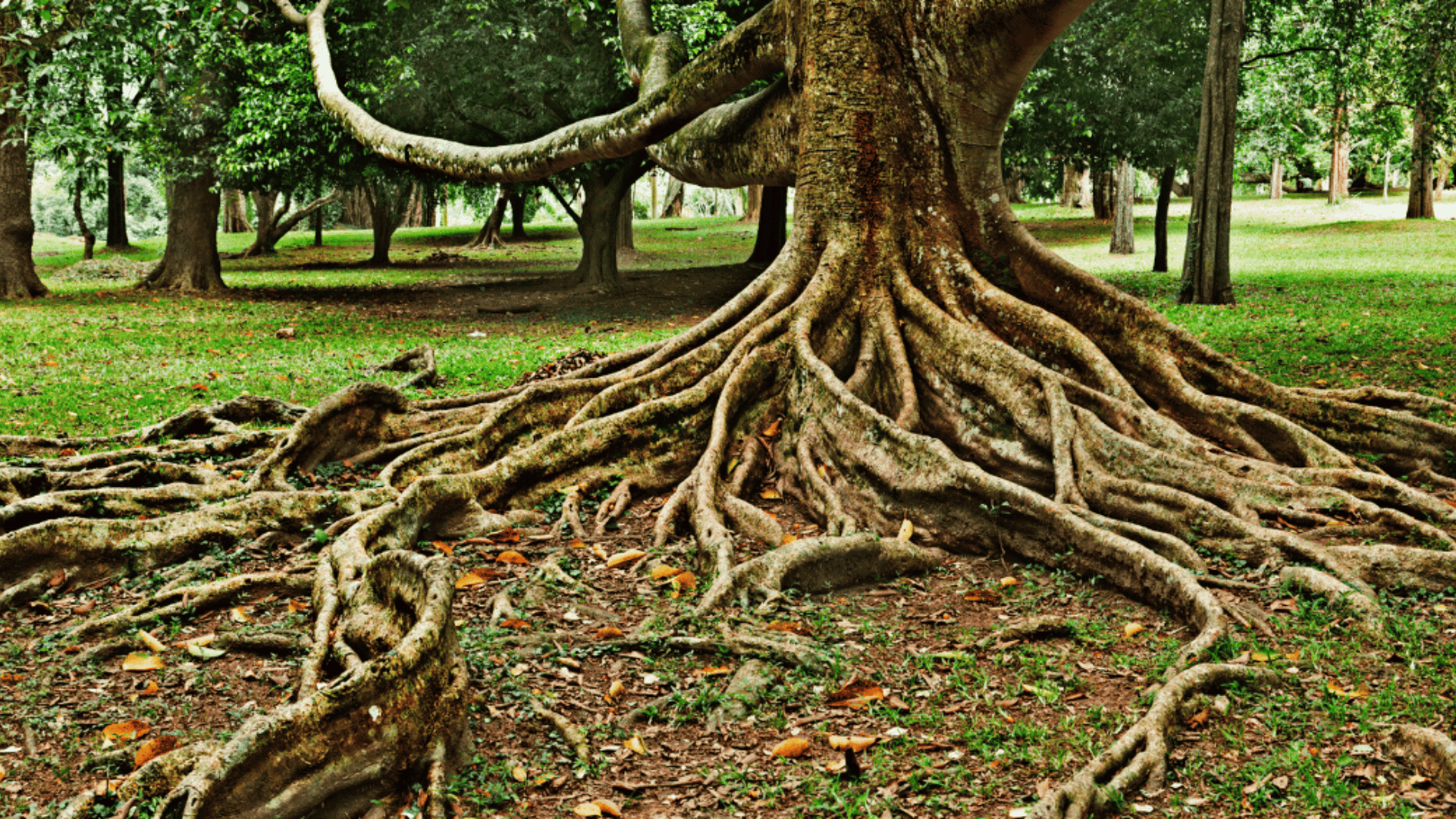
When people mention “invasive roots,” they’re usually talking about roots that grow fast and wide, causing problems by entering pipes, cracking sidewalks, or crowding out nearby plants.
These types of roots often belong to aggressive species that don’t stay where they’re planted. In some cases, they can even harm buildings, drainage systems, and gardens by spreading beyond control.
True invasive roots also tend to belong to non-native species that upset the natural balance of local ecosystems.
That’s why it’s important to understand what kind of root system a tree has before planting it near a home, driveway, or garden bed. Knowing how a tree’s roots behave helps avoid costly repairs and damage.
In the case of redbuds, it’s worth looking closely at how their roots grow and whether they pose any of these common problems.
Are Redbud Roots Invasive?
Redbud trees are often mistaken for having invasive roots, but they’re generally safe for residential planting.
Their shallow, spreading roots are non-aggressive and unlikely to damage sidewalks or foundations, unlike species like willows or silver maples.
When planted 15–20 feet from hardscapes, they rarely cause issues. Redbuds also grow well alongside other plants, making them a low-risk, attractive choice for home gardens.
Redbud Root System Basics
Redbud trees grow shallow, wide-spreading roots that stay close to the surface and are easy to manage in most home landscapes.
- Shallow Roots: Most redbud roots grow in the top 6–12 inches of soil.
- Spreading Habit: Lateral roots extend outward more than downward.
- Taproot in Youth: Young trees may have a taproot, but it often fades over time.
- Horizontal Growth: In poor or compacted soil, roots spread widely near the surface.
- Mature Size: Root systems can reach 16–29 feet in width.
- Limited Depth: Root depth typically stays under 3–4 feet.
- Landscape Friendly: This flat, wide root pattern makes them easier to manage in home gardens.
Benefits and Drawbacks of Redbud Trees
Redbud trees not only add beauty but also support pollinators, feed wildlife, and improve soil health in home landscapes.
Benefits
- Pollinator Friendly: Early spring flowers attract bees, butterflies, and hummingbirds.
- Wildlife Support: Seed pods provide food for birds and small animals.
- Soil Health: Redbuds support beneficial fungi that improve soil quality.
- Biodiversity Boost: They create a habitat for native insects and wildlife.
- Seasonal Interest: Offer year-round appeal with flowers, leaves, and seed pods.
- Low Maintenance: Once established, they require minimal care.
- Eco-Friendly Choice: Native to North America and non-invasive to local ecosystems.
Potential Drawbacks
Redbud trees are generally low maintenance, but like all plants, they come with a few challenges worth knowing before planting.
| Drawback | Details |
|---|---|
| Short Lifespan | Most redbuds live between 20 and 30 years. |
| Disease Susceptibility | Prone to fungal issues like canker and Verticillium wilt. |
| Shallow Roots | Roots stay near the surface, making them sensitive to drought. |
| Soil Compaction Sensitivity | Struggle in compacted soil due to limited root depth. |
| Placement Matters | Planting too close to structures and roots may cause mild surface lifting. |
Community Advice on Redbud Tree Root Care
Home gardeners share practical tips and real-life experiences about managing redbud roots and planting locations.
- Many gardeners notice exposed surface roots as redbuds mature, especially in compacted or shallow soils.
- Adding 2–3 inches of mulch helps cover roots and maintain soil moisture.
- Redbuds are not considered invasive, but need at least 15–20 feet of space from homes, sidewalks, and patios.
- Their shallow, lateral root systems rarely damage structures when planted correctly.
- Some users mention roots showing up more in drought-prone or compacted areas.
- Deep watering and good soil prep encourage healthier root growth and reduce surface spread.
- Avoid planting grass directly under redbuds to minimize competition with shallow roots.
- Using root barriers or careful placement is suggested when planting near hardscapes.
- Gardeners report few root-related issues when trees are given space and routine care.
- Several share success with planting redbuds in mulched beds away from foot traffic.
Conclusion
Redbud trees continue to be one of my favorite choices for a yard with beauty and purpose.
With their stunning spring flowers, heart-shaped leaves, and strong support for pollinators, they’re more than just pretty- they’re helpful too.
Their roots, when planted with enough space, rarely cause trouble and blend well into most home landscapes. I’ve seen how well they do in both wide, open spaces and smaller garden corners.
With just a bit of care, these trees bring color, wildlife, and charm for years.
If you’re thinking about adding a tree to your yard, consider the redbud. Plant it where it can grow freely, and enjoy what it brings every season.
If you already have one, I’d love to hear about it- share your photos and let me know how it’s growing.


